
Denmark’s Only Travel Guide You Need For A Great Trip in 11 Easy Steps
- Destinations Europe
Cruisit Team
- August 2, 2022
- 0
- 4848
- 92 minutes read
Denmark’s Background
After the end of the Ice Age, early Danes, who were hunters and fishermen presumably settled around 10,000 BC. They started farming around 3000 BC and continued to do so until the early days of the Iron Age when they interacted with the Romans and started trading goods and slaves. A writing system, Runes, was utilized by 200 AD. From the early 9th, the Danes attacked various countries in Europe, including England and Ireland and plundered monasteries, abducted, and enslaved people. This was the case until the late 9th century and early 10th century when their focus shifted from raiding and plundering to conquering.
The late 9th century saw the Vikings (Danes) attacking England and later the English conquering the Danes. It also saw England being split with the Danes taking the eastern half, over the next several decades, the English the Danish side of England, then came to their senses and coexisted until the start of the 11th century when King Ethelred of England ordered the slaughter of Danish immigrants, among them were relatives of the King Sweyn Forkbeard of Denmark. Retaliation was the course, however, in exchange for money, didn’t assault England. By 1013, King Sweyn Forkbeard became king of England, for 5 weeks until he died. That’s why he was called the “forgotten king.”
A period of power struggles, empire expansions, invasions, and civil wars accompanied the following decades, which included the invasions of both Norway and Estonia by different monarchs of the time. Trade flourished in the Baltic area, and Danish towns grew larger and more prominent in the 12th century. However, by the 14th century, Denmark was devastated by the Black Death, like many other countries in Europe. A union of Denmark, Norway, and Sweden was short-lived in the coming years, and many kings rose to power and were later overthrown, until the early 16th century when Sweden was finally split from Denmark forever.
Revolts, civil wars, and wars ravaged Denmark for decades and centuries to come. Treaties were also formed but quickly broken numerous times between the Danes and Swedes in the early 17th to the early 18th century. The majority of the 18th century, however, was tranquil for Denmark, and a sizable merchant marine was built up. Crown Prince Frederick instituted a multitude of changes, like freeing peasants, no longer having to work on their lord’s property, and landowners lost the authority to punish or beat the peasants. When Denmark stopped attacking and being attacked by Sweden, the French, Britain, Russia, and Prussia were in a quarrel. The Brits, worried that the French would use the Danish navy to attack them, then assaulted a Danish force at Copenhagen Harbor in 1801, devastating them. Then, the French navy was annihilated at Trafalgar in 1805. Copenhagen was ravaged by fire and many parts were destroyed. Then the Swedes decided to attack Norway in 1813, and as a consequence, the Danes were forced to give it to them in 1814.
The 19th century saw much conflict whether internally in Denmark or with its neighbors over lands and territories, namely Schleswig which caused wars to ensue between the Danes and the Germans, but also Prussians. Despite the calamity, Denmark’s economy flourished fast in the late nineteenth century especially due to the brewing and sugar beet industries, as well as engineering and shipbuilding. The Danes may have learned their lesson from the past and wanted peace, which made them neutral throughout both World War I and World War II. However, the Germans invaded Denmark for its food supply. The Danes wanted to sabotage the enemy, but the Germans responded by ravaging the country. After Germany’s defeat, the country of Denmark has prosperity during the 60s but also had economical downturns in the 70s, but ever since then and until now, Denmark has grown into a modern, rich nation that is engaging in Europe’s overall political and economic union.
Denmark’s five major areas are Jutland, Funen, and its minor surrounding islands, Zealand, Lolland-Falster, and Bornholm. The island of Zealand is home to around 40% of the country’s inhabitants. The area of Jutland has ancient towns as well as the birthplace of the popular children’s toy, Lego. You may visit the house of the world-renowned author Hans Christian Andersen in Funen and its adjacent islands. Zealand is home to both the country’s capital, Copenhagen, and the Vikings’ Roskilde stadium. Viking relics, anyone? The Lolland-Falster region is ideal for nature lovers to explore Denmark’s magnificent outdoors. Bornholm is located quite far east of the other districts and is renowned as a holiday island. The highest natural peak is merely 171 meters above sea level, and that just shows how flat Denmark is. Denmark’s long coastline is filled with beaches, as well as inland forest regions and large lakes.
While Denmark is a member of the European Union, it keeps its own currency, the krone, but is still a member of the Schengen Area, making it easier to traverse the European borders. This is also a progressive country in terms of social, economic, and political development. In terms of health care, education, democratic government, human development, and income equality, the country scores highly. It is also one of the least corrupt countries in the world. Denmark is also rich in culture, natural beauty, and breathtaking architecture.
“Once the home of Viking raids plaguing Europe, then inventors of amusement parks, and Lego. Both modern and rich in history, and with a positive emphasis on hygge. Antique villages, castles everywhere, and lively nightlife, but also stunning forests and unrivaled scenery await you.“
While many countries are notable for the widening divide between the wealthy and the poor, Denmark appears to be populated by the middle class, with the obviously affluent and clearly broke few and far between. This egalitarian atmosphere makes the greatest of the arts, architecture, dining, and entertainment available to everyone. Indeed, the greatest catchphrase for Denmark could be ‘inclusive’ – everyone is welcome and everyone is catered to regardless of who they are. Cities are compact and easy to navigate, infrastructure is contemporary, and transport is simple.
With Hans Christian Andersen’s fairy tales and Lego, every child’s favorite toy, Denmark can transport you back to the carefree childhood days you thought you lost. Let your inner child out at the Little Mermaid, Tivoli, or Legoland. When you’ve had enough of messing around, it’s time for a premium dinner. With fifteen Michelin-starred restaurants, Copenhagen has some of the top restaurants in the world and is the origin of the trendy New Nordic Cuisine. Simple, fresh, and delicious!
Many visitors to Denmark come to view the Little Mermaid statue, Legoland, or simply to appreciate the lovely scenery and engage with the friendly locals. This Nordic nation is located north of Germany and south of Norway and Sweden. Denmark’s mainland, generally known as Jutland, is connected to Germany; nonetheless, there are a number of Danish islands. Zealand, which is home to Copenhagen (the capital), and Funen are the two biggest islands. These islands are located in the Ostersoen Sea.
Truly, Denmark lacks the jaw-dropping natural grandeur of its neighbors, but its landscapes are modest – clean and simple, frequently imbued with ethereal Nordic light. Such landscapes are represented in Danish design philosophy as it relates to fashion, gastronomy, architecture, furniture, and art. Form and utility are prioritized, but not at the price of beauty. So you may discover classic Danish loveliness on a long sandy beach, by a lake, admiring a Renaissance castle, on Bornholm’s bike paths, or in a candlelight cafe that has mastered the art of hygge.
In a low-key way, Danes are highly proud people who seem to all represent their notion of “Hygge,” which loosely translates to “cozy.” Because this notion is unique to the Danish language, expressing its actual meaning to an English speaker might be difficult. Another important aspect of Danish culture is humility, which can be noticed in both conduct and the Danes’ famed minimalistic style.
It’s heartening to know that there is still a country where the word “fairy tale” is freely utilized, from its most enduring literary heritage to its textbook castles. In a word, Denmark does it right: old-world charm meets with forward-thinking design and societal advancements. The country consistently ranks among the world’s most livable and happy countries. You won’t have to look far to find joyful hygge culture, a particularly Danish feature that has a deep impact on the incomparable contentment of the people. In Denmark, hygge is social nirvana: a sensation of coziness, camaraderie, and gratefulness.
To get the most out of Denmark, you should keep moving so that you may see and do as much as possible of what Denmark has to offer tourists. In our Cruisit Denmark travel guide, we provide a strategy that is roughly midway between leisure and exploration. Enter the land and immerse yourself in this European ideal location. The Denmark vacation schedule provided below is best enjoyed during the nation’s high season in the summer, but you may still enjoy the country during the shoulder season. With its medieval touch, sunny days near hills, under the shade of ancient structures, and surrounded by a historical melting pot, your modern European desires will come true.
Also, in our travel guide to Denmark, we will give you all the information you will need to steer through the country at ease. Denmark’s highlights, tips, transportation, top places and attractions, a handcrafted itinerary in Denmark, and more will be provided for you as you read through. If you are excited enough by now, let us dig right in!
- Eat up at Copenhagen’s many fine restaurants while strolling through its cobblestone streets, gawk at its stylish pubs and attempt to copy its sense of fashion, then let it all go and ride the Rutschebanen in Tivoli Gardens.
- In Legoland in Billund, you may relive your youth.
- Admire Roskilde’s Ancient City and celebrate the Roskilde Festival. You can also visit the Viking Ship Museum and Cathedral, which is also a World Heritage Site and is where the Danish Royals are buried.
- Skagen, on the northern coast of Jutland, with its beaches and bohemian culture, is a great place to cycle about.
- After seeing where Hans Christian Andersen was born in Odense, take a bike ride out to Egeskov Castle.
- Explore Aarhus, Denmark’s second-largest city, and don’t miss its ancient town and the magnificent Moesgard Museum of Prehistory. Party during Aalborg’s Carnival, Scandinavia’s largest.
- Learn about the Vikings and the birthplace of Denmark in Jelling, near Vejle.
- On the Danish Riviera, rub elbows with the Danish jet-set, with Frederiksborg Castle and none other than Hamlet’s imaginary castle, Kronborg Castle as toppers.
- Visit Bakken, the world’s oldest amusement park, which was constructed in the 16th century.
- Denmark is home to an excellent cycling network, so pedal whenever possible! Cycling is important to the Danish way of life.
- Denmark is a wonderful place for children and one of the safest places in the world.
- Eat! There aren’t many decent restaurants in many other nations, and even the tiniest hamlet eatery ranks among the finest.
- Denmark has notably high taxes, with the VAT at 25% so keep that in mind when budgeting.
- Denmark is one of the world’s flattest countries, with its highest peak, Møllehøj, standing at roughly 170 meters.
- Healthcare in Denmark is free for citizens and visa holders registered in the nation, but not for visitors (tourists), so make sure to get insurance.
- Denmark isn’t what comes to mind when you think about islands, but it does have almost 400 of them within its sovereignty.
- Denmark owns Greenland, much like a landlord.
- Danes are a little more difficult to get along with than your average nation, and this is true for much of Scandanavia, but, behind those first impressions are exciting experiences.
- Danish is the official language, however, English and some Swedish and Norwegian are frequently spoken.
- Denmark may be entered with a Schengen Visa because it is a member of the European Union, although numerous countries in the Americas, Australia, New Zealand, and the UAE also have visa-free travel for 90 days.
- Traveling across Denmark can get expensive if you don’t plan ahead of time, so keep track of your expenses and try to stay as close to home as possible to save money. Food, transportation, and even accommodations such as hostels are expensive in comparison to other parts of the world.
- Even if it’s late and there’s no traffic, don’t jaywalk.
- Don’t drink and drive or even ride a bike.
- Drugs, including marijuana, are outlawed in Denmark, so don’t think it’s lawful.
- Even though dogs are cute, you won’t be able to engage with them in Denmark since Danes dislike it.
Crime & Scams in Denmark
Denmark is recognized as the safest country in the world due to its extremely low rates of violent crime, robbery, terror, and natural calamities. Its pleasant and inviting people contribute to the country’s allure, and travel here is as risk-free as it gets. You’ll be alright in Denmark if you keep your wits about you. Visitors have less to fear in terms of crime, and women do not face nearly as much harassment in public as they do in the United States.
Be vigilant, particularly if you are in cramped public places, near official buildings, crowded attractions, or on public transportation. Take care on city streets, especially after dark or if you are on your own. Don’t carry large amounts of money or wear valuable watches or jewelry. Avoid using your mobile phone in the street. Also, please don’t brag and show off in Denmark. It’s a minimal country, so be humble.
Healthcare in Denmark While Traveling
Denmark It is one of the richest nations in the world, with one of the best medical systems. Simply put, nothing will happen to you that their experienced medical staff will not be able to assist you with. However, it is not free for visitors and can be very expensive.
Before every trip, make sure you are up to date on all routine vaccinations. Among the key recommended vaccines globally are chickenpox (Varicella), diphtheria-tetanus-pertussis (DTP), influenza (flu), measles-mumps-rubella (MMR), polio, hepatitis, typhoid, and shingles. If you will be in contact with wildlife, you may want to consider getting a rabies vaccination.
When visiting Denmark, you are legally required to purchase travel medical insurance and can be denied entry if you don’t have one. If you are from a country with a visa-free travel arrangement with the Schengen Area then Schengen travel insurance is not mandatory. However, it is always important to have comprehensive medical coverage when traveling because you never know what you could encounter while overseas.
Only eat foods that are cooked and served hot, avoid food that has been sitting on a buffet, and eat raw fruits and vegetables only if you have washed them in clean water or peeled them.
Only drink beverages from factory-sealed containers, avoid ice because it may have been made from unclean water, and only drink pasteurized milk.
Always wash your hands with soap and water for 20 seconds, especially after using the bathroom and before eating. If soap and water aren’t available, use an alcohol-based hand sanitizer that contains at least 60% alcohol. Also, keep your hands away from your face and mouth.
Denmark has a coastal climate but also continental, with somewhat chilly, but pleasant and dry summers ranging from 24°C to 28°C and, winters that are long, cold, and wet with temps easily dropping below 0°C. While you can visit Denmark all year, it’s a good idea to know what to expect in each season before planning your trip there. The best time to visit is in the spring followed by summer.
The best time to visit Denmark is determined by your preferences and interests. While you may visit Denmark all year, it’s a good idea to know what to anticipate in each season before planning your trip.
Summer in Denmark is ideal for road trips and outdoor activities, but it is also the warmest season, with temperatures sometimes reaching 30 degrees Celsius. If you want to avoid crowds, the shoulder season is an ideal time to go to Denmark. Winter is ideal for coziness because there are several Christmas markets around Denmark. So when to go to Denmark depends on your Denmark trip itinerary.
Shoulder Season
The shoulder or mid Seasons is from May to June and August to September – The weather is pleasant at these times and fewer people visit making this a great time to travel. The shoulder season in Denmark, late spring or early autumn, is recommended for cyclists looking for quiet roads but reasonable temperatures.
High (Peak) Season
The high Season in Denmark is from June to August and marks summer. Warmer temperatures that can get up to 30°C at times and more daylight to enjoy. This is the holiday season for the Danes as well, so if you want to avoid the crowds, head inwards towards the mainland, as most Danish tourists would head towards the lakes and the coast, so the shoreline may can get crowded. Expect crowds and increased accommodation costs when all attractions and landmarks open. This time is great for trekking in the lush environment
Off-Season (Low Season)
The low season in Denmark is winter and runs from October to April – Cool and damp weather with little daylight hours. Popular tourist sites have reduced hours, and many outdoor attractions are closed. Big cities, on the other hand, have Christmas lights and ice skating. During this time, guests mcanay enjoy Danish hygge and the magnificent Christmas. Winter in Denmark can get as cold as -1◦C and feels colder with wind chill.
By Plane
Kastrup Airport, situated just outside of Copenhagen, is the main airport. Billund, in central Jutland, is the second biggest airport. All major airports have public transportation in the form of a bus, rail, or metro. The regional rail or Metro is the shortest way to go from the airport to Copenhagen. You may also take bus 5A from the airport to the city center, which takes around 35 minutes.
Furthermore, smaller airports at Aalborg, Aarhus, and Billund handle an increasing number of low-cost flights, the majority of which are handled by Ryanair.
By Train
The European rail network connects Germany to Denmark which arrives at the Central Station.
By Car
The Denmark–Germany border is the only border with Denmark across Europe and it stretches 68 km.
By Bus
Most international buses arrive at Central Station, where the trains are, and they mostly service routes, towns, and cities that are not served by rail.
By Boat
Regular ferry connections to and from Sweden and Norway (through Frederikshavn or Hirtshals) are available. A somewhat longer trip to the Faroe Islands and Iceland (via Hirtshals) is also available.
Trains. Denmark boasts an efficient and user-friendly public transportation system. Danish State Railways (Danske Statsbaner or DSB) operates an extensive, dependable rail network that is augmented by a few privately operated train lines. The service ranges from huge intercity express trains (lyntog) to smaller local trains (regionaltog). InterRail/Eurail passes are usable on all DSB trains, with lower fares on the majority of privately operated lines. Ticket rates are computed using a national zonal approach, and local transportation within the zone of departure and arrival is included.
A City Pass is a digital travel ticket that provides unlimited public transportation in Copenhagen zones 1-4, including the airport, for 24, 48, 72, 96, or 120 hours. It costs DKK 80 for 24 hours.
By Plane
There are multiple flights every day from Copenhagen to cities around Denmark. SAS, for example, has direct flights to Aarhus, Aalborg, and Billund, while Norwegian has direct flights to Aarhus, Aalborg, and Karup. Domestic and international flight services are provided by airlines such as DAT and Alsie Express to smaller airports like as Bornholm, Odense, Esbjerg, and Snderborg. Nordic Seaplanes also operates a 45-minute seaplane service between Aarhus and Copenhagen.
By Train
Denmark, with its hundreds of bridges and lack of mountains, has a vast network of railway lines connecting practically every hamlet to the capital, Copenhagen. Except for a few outlying islands that can only be reached by ferry, trains serve nearly all major towns and cities in Denmark. Special European passes are also available if you want to travel extensively throughout Europe.
Lyntog (“Express Trains”) is a term you’re likely to see and hear a lot, as these are Denmark’s quickest trains right now. Be aware that the busiest days on Danish trains are Fridays, Sundays, and national holidays, so make your bookings accordingly.
By Car
Traveling across Denmark by private automobile on the good road network is the best option. Avis, Budget, and Hertz all have well-serviced, well-maintained automobile fleets. To receive the best prices, you may need to book and pay for your rental car ahead of time (typically two weeks, but sometimes as little as 48 hours). Unfortunately, if your trip is canceled or your arrival date changes, you may be required to fill out several papers in order to receive a refund. Clients who reserve less than 48 hours in advance and pay at pickup may face slightly higher fees from all three businesses. Walk-in guests that schedule their rentals after arriving in Denmark pay the highest fees. You must have a valid driver’s license from your native country. If you are driving your own automobile, you must have a registration certificate and national plates. Remember that petrol costs in Denmark are exceptionally high, and that the Danish government puts a hefty 25% tax on all car rentals.
By Taxi
Copenhagen is one of the most expensive cities in the world to take a taxi – at least for short distances – but the majority of Denmark’s cities and towns are as well. They are, however, dependable, well-maintained, and clean. Taxis in Copenhagen begin at a basic fee of 55 DKK and quickly rise in price. In Denmark, Uber and Lyft do not operate. Alternatively, TAXA 4×35 is Denmark’s largest taxi app, and it allows you access to over 1,000 cabs in Copenhagen that have free WiFi!
By Bus
The bus network is extremely vast and frequently supplements the rail schedule, albeit the fares are not significantly lower than those of trains. Some are run privately, while others are run by the DSB; InterRail and Eurail passes are not valid. DSB schedules, also known as kreplan, describe railway, bus, and ferry services, as well as Copenhagen’s S-train and metro systems. The only buses that are not included are those of a few private firms, which may be found at train and bus stations.
If you opt to travel by bus, keep in mind that you will most likely be met at the train station. (In most of Scandinavia, buses transport people to places not served by trains; hence, the bus route frequently begins at the railway station.) Trains and buses frequently arrive and depart at the same time.
By Boat
Ferries or bridges connect all of Denmark’s major islands. Train and bus fares, if applicable, include the cost of crossings (although with ferries you can also pay at the terminal and walk on). The really handy HI map includes routes and costs. Scandlines, Color Line, Fjord Line, and Stena Line are among the major tour companies that operate ferry and cruise services to Denmark from other major European locations.
The harbor bus travels from Teglholm in the south to Refshaleen in the north. These boats are run by the same company that operates regular buses, and all ticket kinds are valid. In the summer, it’s a terrific way to observe the city from the sea and an efficient method to go from Nyhavn to Reffen. All harbor buses have run on green power since 2020.
By Metro
The Metro is the simplest and quickest method to go from the airport to central Copenhagen in Denmark. Furthermore, the metro is handier than the train since it operates continuously. The metro seldom takes longer than a few minutes to arrive. There are now four lines: M1, M2, M3, and M4. The M1 line travels from Vanløse to Vestamager, whereas the M2 line travels from Vanløse to Copenhagen Airport. M3 is known as the city ring because it circles the city and meets with the other three metro lines at Frederiksberg and Kongens Nytorv. M4 connects Copenhagen’s main train station to Nordhavn and Orientkaj. Denmark’s metro system operates around the clock.
SIM Cards & Calls in Denmark
A Danish SIM card costs 29 DKK (4.60 USD) from Lycamobile and 49 DKK (7.75 USD) from Lebara through resellers such as supermarkets, 7-Elevens, and electronics stores. At Copenhagen International Airport, SIM cards are also available (CPH). For such an expensive nation, SIM cards issued by local cell companies include a substantial quantity of data that is nearly limitless. You may buy up to 4 GB of data valid for 30 days with local and roaming minutes for as little as 19 DKK (2.6 USD).
Alternatively, you may also get a prepaid eSim card from a company like Airalo, SIMCorner, HolaFly, or Nomad. All the providers offer data-only plans that may be used with an eSim-enabled phone, so make sure your phone is compatible. It is also possible to sign up for a Solis WiFi Hotspot. Check before you travel because they only serve select areas. Airalo provides the most extensive coverage of over 180 nations.
Local Internet & WiFi in the Denmark
If you’re looking for a fast internet connection, you’d be hard pressed not to locate one in Denmark. Only the largest cities in Denmark have free wifi hotspots. Denmark boasts the fourth-fastest Internet in the world, with rates of roughly 108 Mbps. Wifi is available in public areas such as pubs, restaurants, museums, shopping malls, monuments, and even parks and other amenities. Hotels, hostels, and other types of lodging will very certainly provide free WiFi as part of your stay. Don’t worry, all major airports, including Copenhagen Airport, provide free internet connections.
Top Places in Denmark
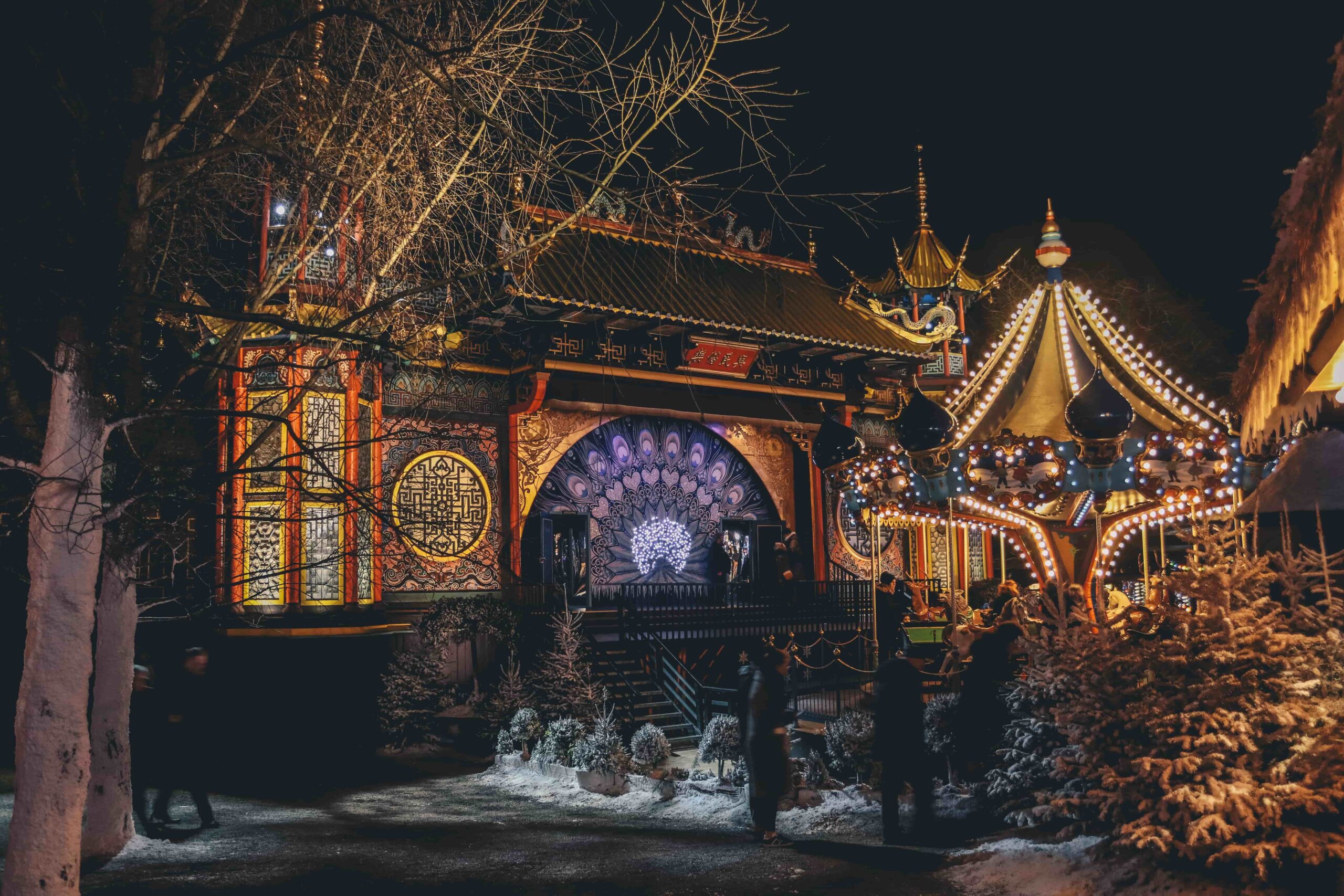
Tivoli Gardens
Tivoli, commonly known as Tivoli Gardens, is a pleasure garden and amusement park in Copenhagen, Denmark. It is the world’s third-oldest functioning amusement park, after Dyrehavsbakken in nearby Klampenborg, Denmark, and Wurstelprater in Vienna, Austria. The park opened on August 15, 1843, and is Europe’s sixth most popular amusement park. It had 4.6 million visitors in 2017 – the second-most popular seasonal amusement park after Europa-Park.
The Little Mermaid
Edvard Eriksen’s bronze piece The Little Mermaid depicts a mermaid becoming human. Based on Danish author Hans Christian Andersen’s 1837 fairy tale of the same name, the modest and unimposing monument is a Copenhagen landmark. Mermaid is one of several iconic sculptures that represent cities, including Pania of the Reef in Napier and Manneken Pis in Brussels.
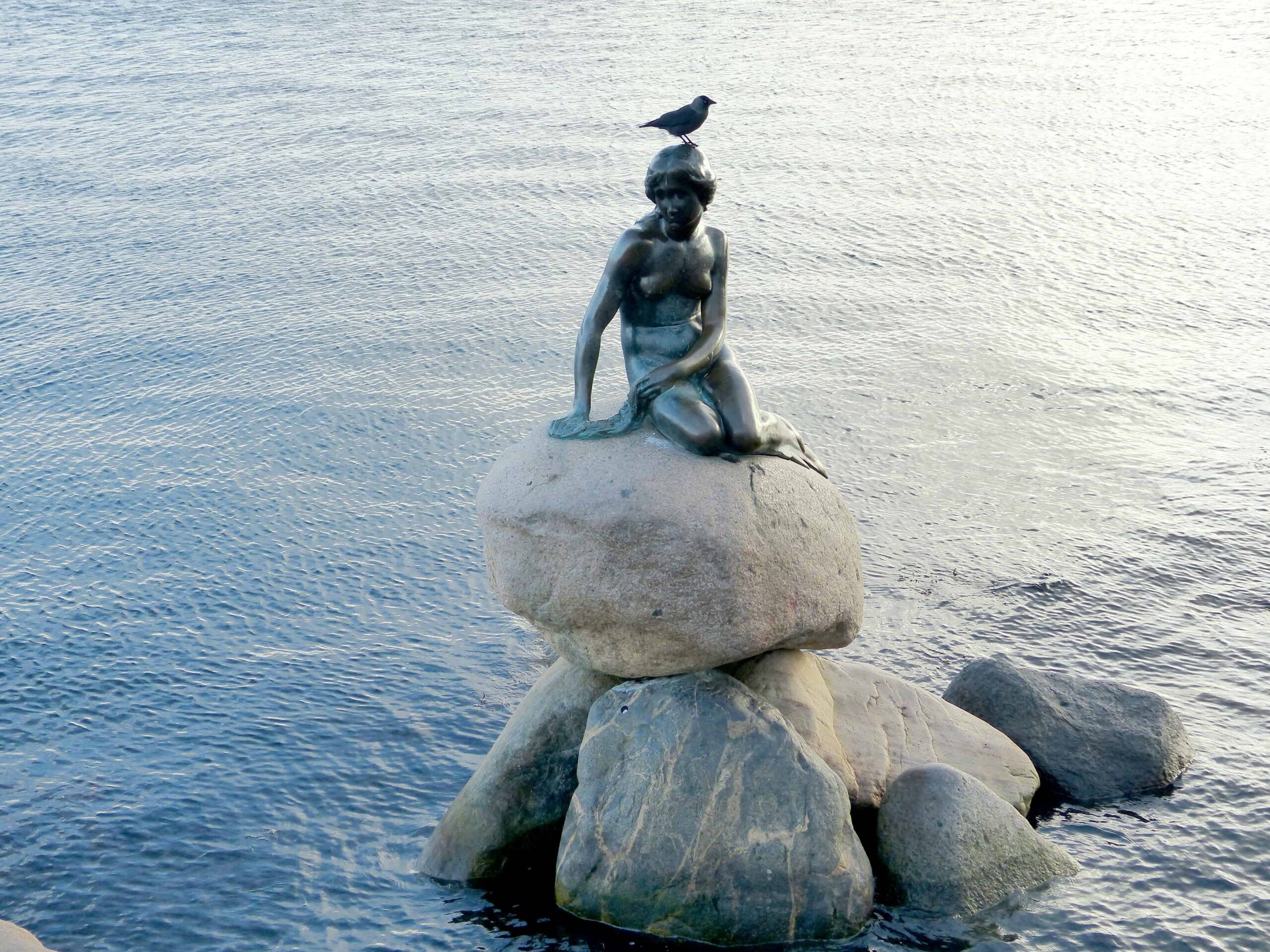
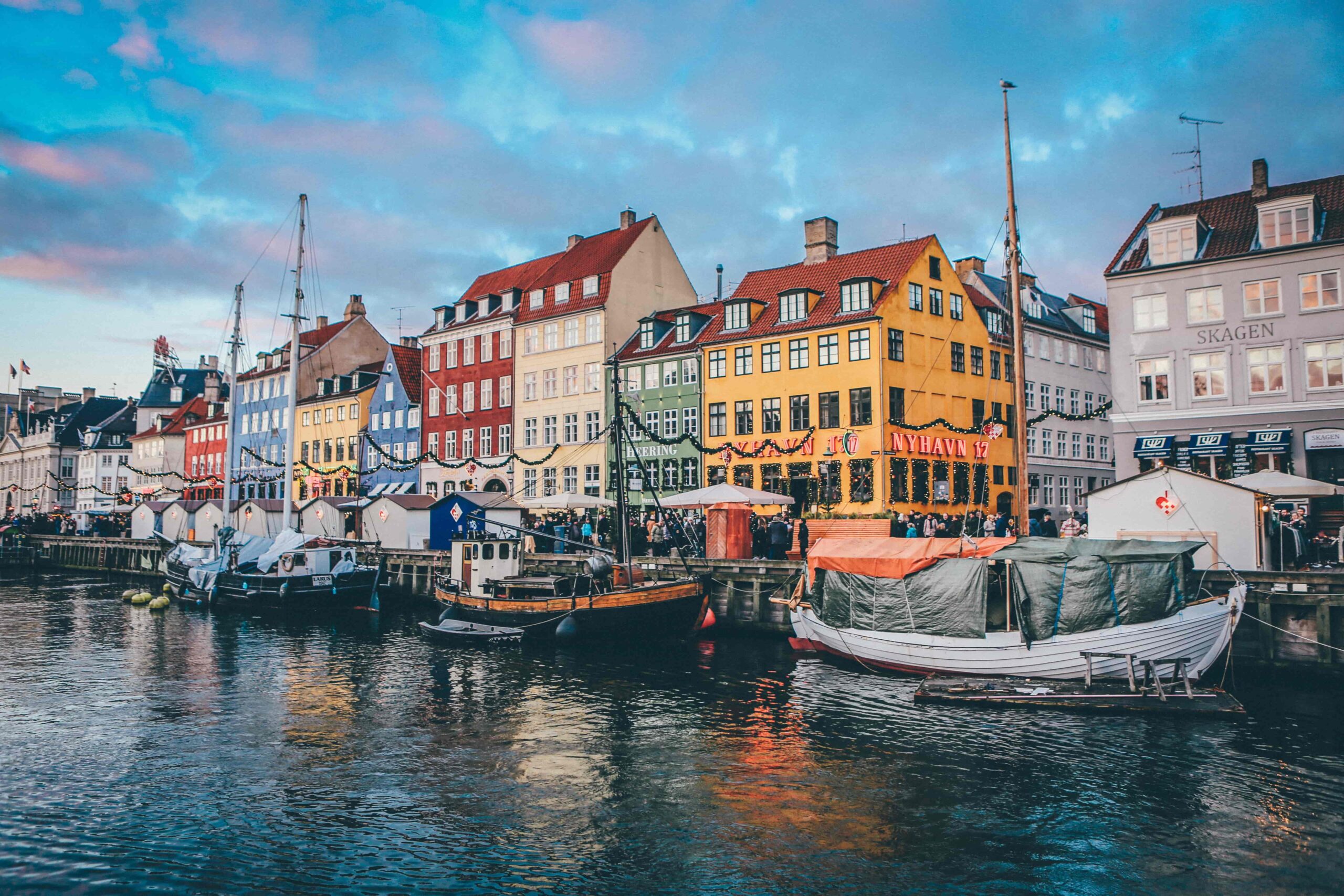
Nyhavn
Nyhavn is a waterfront, canal, and entertainment zone in Copenhagen, Denmark, dating from the 17th century. It runs from Kongens Nytorv to the harbor front just south of the Royal Playhouse and is flanked by vividly colored 17th and early 18th century townhouses, as well as taverns, cafés, and restaurants. Many ancient wooden ships are docked in the canal.
Rosenborg Castle
Rosenborg Castle is a Renaissance-era castle in Copenhagen, Denmark. It was erected in 1606 as a rural summerhouse and is one of Christian IV’s many architectural undertakings. It has been enlarged multiple times until reaching its current state in 1624. Architects Bertel Lange and Hans van Steenwinckel the Younger are engaged with the structural planning of the castle.
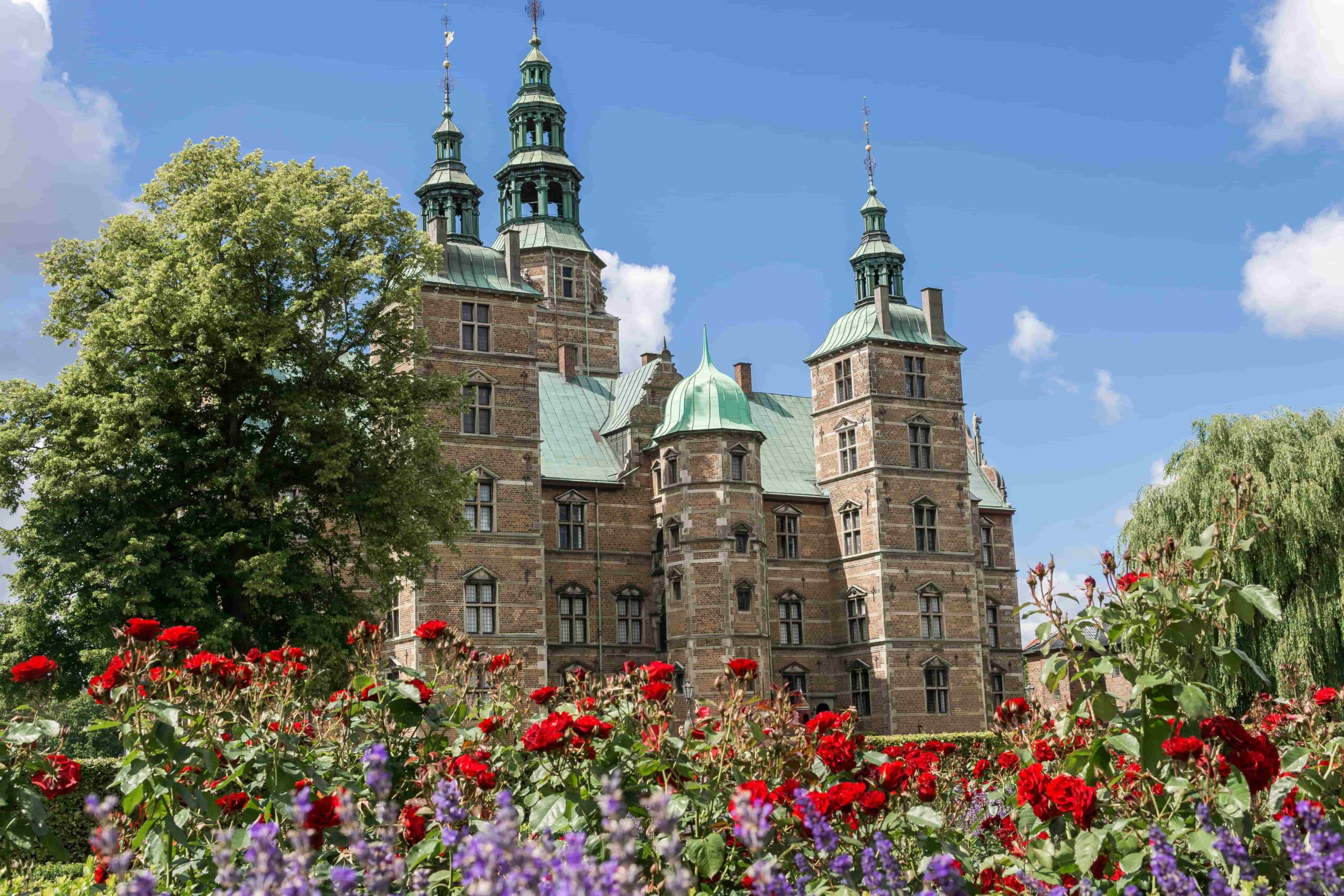

Legoland
The original Legoland is in Billund, Denmark, in the Jutland area. This park, first established in 1968, is located next to the original Lego plant. If you are traveling with children, this is the ideal attraction.
7-day Itinerary in Denmark (with extension options)
Day 1
Arrive at Roskilde
Roskilde is a town around 30 minutes from Copenhagen. For most Danes, it is most known for the local festival, which attracts notable celebrities from around the world, every first week of July (when most of Denmark is on holiday). There is a different appeal for travelers. It’s just enough for about half a day, but it’s still worth a visit.
When kings and queens, as well as the rest of the royal Danish family, die, they are buried at Roskilde Cathedral. The cathedral here is really breathtaking. You are also able to see the combs with rulers, which is really intriguing. Overall, the Roskilde Cathedral represents about 1000 years of Danish history, from pagans to Christians. But also visit the Viking Ship Museum while you’re there.
Roskilde would be an excellent place to start your Denmark trip, so after touring the church, take the train to the next stop. Odense. Odense is the birthplace of author Hans Christian Andersen, better known as the author of The Little Mermaid and The Ugly Duckling.


It won’t take you long in Roskilde, then head to Odense. Odense is a large city, but if you only come for the key attractions, such as the writer’s boyhood home, the historic center, and his museum, a half-day is plenty. It is a lovely city. You can explore all of the historic places by just following the stairs on the pavement. They are known as H.C. Andersen stairs, and they are constructed in such a way that they guide you through town.
For sci-fi aficionados, Odense features a brand-new museum dedicated to the history of science fiction. In the exhibition, you can meet aliens and robots, as well as see a piece of sci-fi from the 1950s. The admission cost is reasonable (just about 100 DKK).
You can also visit Odense during their flower festival, which takes place in the middle of August. The city is overflowing with flowers and flower sculptures. This festival takes place across the city center and surely adds a shine to the area.


- Backpacker:
- Budget:
- Mid-range:
- Luxury:
When it becomes dark, a foreign city may be twice as dangerous - especially if you don't understand the language and are unfamiliar with the area. There is no reason to be alarmed about walking home alone in the dark as there is not enough crime recorded in Odense to warrant any bit of worry. You can walk safely at night and never worry about crowded areas or unlit alleys or streets, but you can always take a taxi, if you don't feel comfortable. However, be wary of petty crime by taking precautions mentioned in the safety section above.
From Odense to Egeskov
The castle is roughly a half-hour rail ride from Odense. However, there is a catch: the castle is around 2 kilometers from the train station. There is a bus, although it does not run frequently. If the weather is nice, you may also walk there, which takes around half an hour. Otherwise, taxis are frequently available near the train station. After that, take the train back to Odense, which runs every half hour.
Day 2
Head to Egeskov
Take the train to Egeskov, a little settlement. They have what is possibly Denmark’s most magnificent castle, full of stunning settings.
When you arrive, you will be asked if you want to visit the gardens alone or the castle as well. Go for both; it will be worth it. Then proceed directly to the castle, which is very modest yet has a lot to explore. Aside from the castle, there is a beautiful view of the gardens. Aside from the beautiful flowers, you will notice a lot of birds. The ducks are typical for the lake around the castle, but there are also peacocks roaming around.
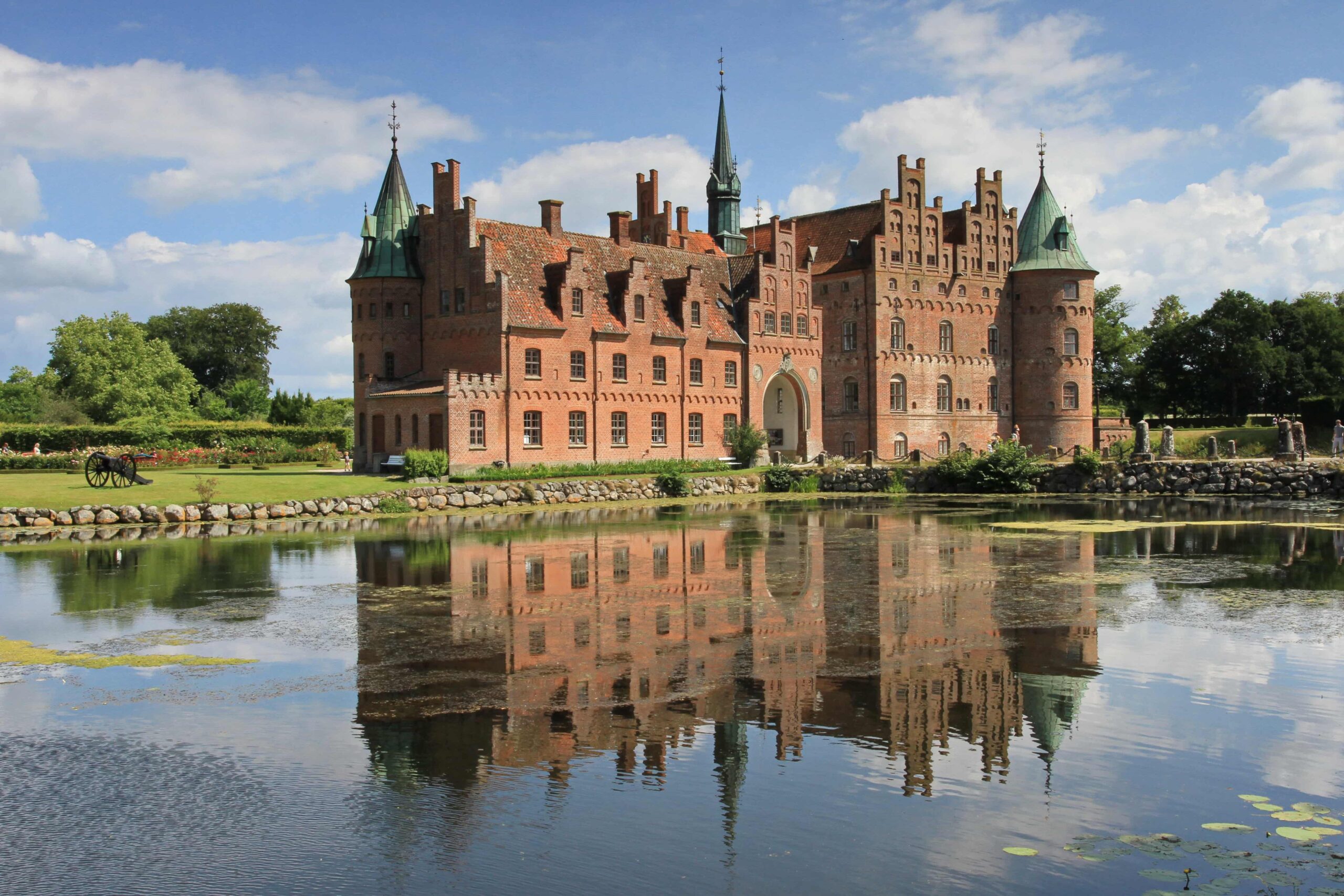

Alternatively, go to Svendborg and take a boat to Denmark’s most beautiful island, Ærø. Visit the Aero Museum to learn about how people live on an island that appears to be remote from all other Danish towns, and then take a walk on the beach. The shore itself will provide you with a short trek through the local dunes. And on the way to the beach, you’ll pass by some cute tiny houses. The Danes only use them during the summer. Also, if you are traveling during the summer, bring a swimsuit and sunscreen

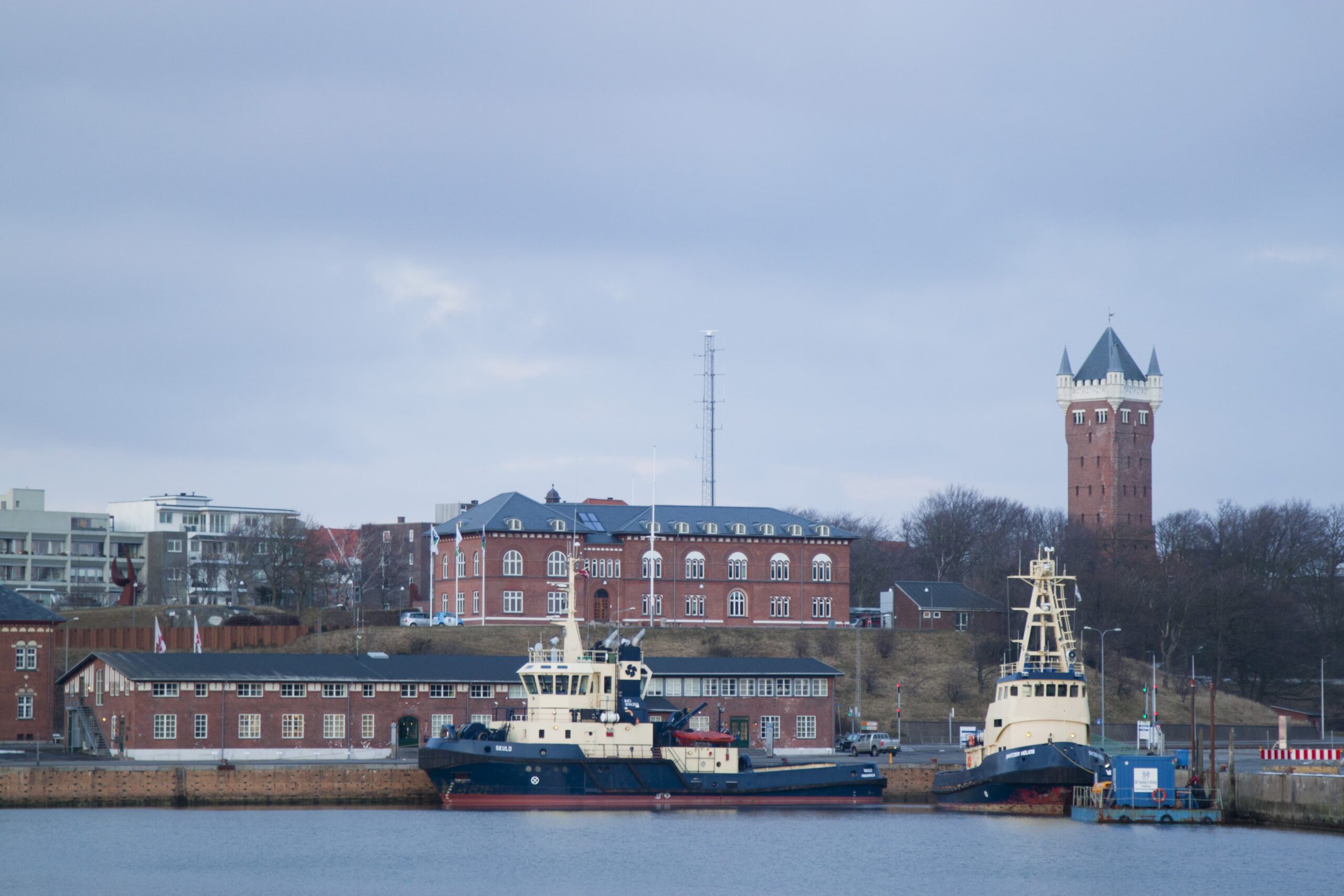

Day 3
Day Trip to Esbjerg
On the third day, travel to Aragorn’s hometown. Yes, Viggo Mortensen is partly Danish and used to reside in Esbjerg. The town itself has a wonderful historical background, although it isn’t all that different from what you’ve seen in Odense.
After relaxing in the city center, take a bus to Esbjerg’s most famous sculpture. The four guys staring at the water. Because the sculptures are so large, they can be seen from a long distance away. There is another possibility to spend time on the beach there, but if that isn’t appealing, there is a fishing museum across the street. Expect to witness everything about fishing, from the Viking era to modern-day fishing secrets. But there’s more to it than that.
Once you’re done, head back to Odense.
Day 4
Explore Ribe
Today’s excursion is to Ribe, a little medieval village. Ribe is home to Northern Europe’s oldest cathedral. In the cathedral, there will be a whole exhibition on Ribe’s history and why it is so significant to Denmark. Climb to the top of the tower to get a bird’s-eye view over Denmark. You’ll be able to see how flat it is.
Spend some time in town after touring the church. There are some of the oldest homes in Northern Europe to see, as well as a monastery and a Viking museum.
Alternatively, from Esbjerg, take a boat to the Danish island of Fano. Aside from Fano’s lovely modest cottages along the beach, authentic WWII bunkers may be found there. You may even walk through them because there is nothing dangerous in the region. Later on, while relaxing on the beach, you may observe wild seals.
Another option, especially if you’re traveling with children, is to take a bus from Esbjerg to the world’s oldest Legoland. This popular toy was invented in Billund, the town where the theme park is located. You can spend a whole day there with local attractions, the majority of which are also suitable for adults.
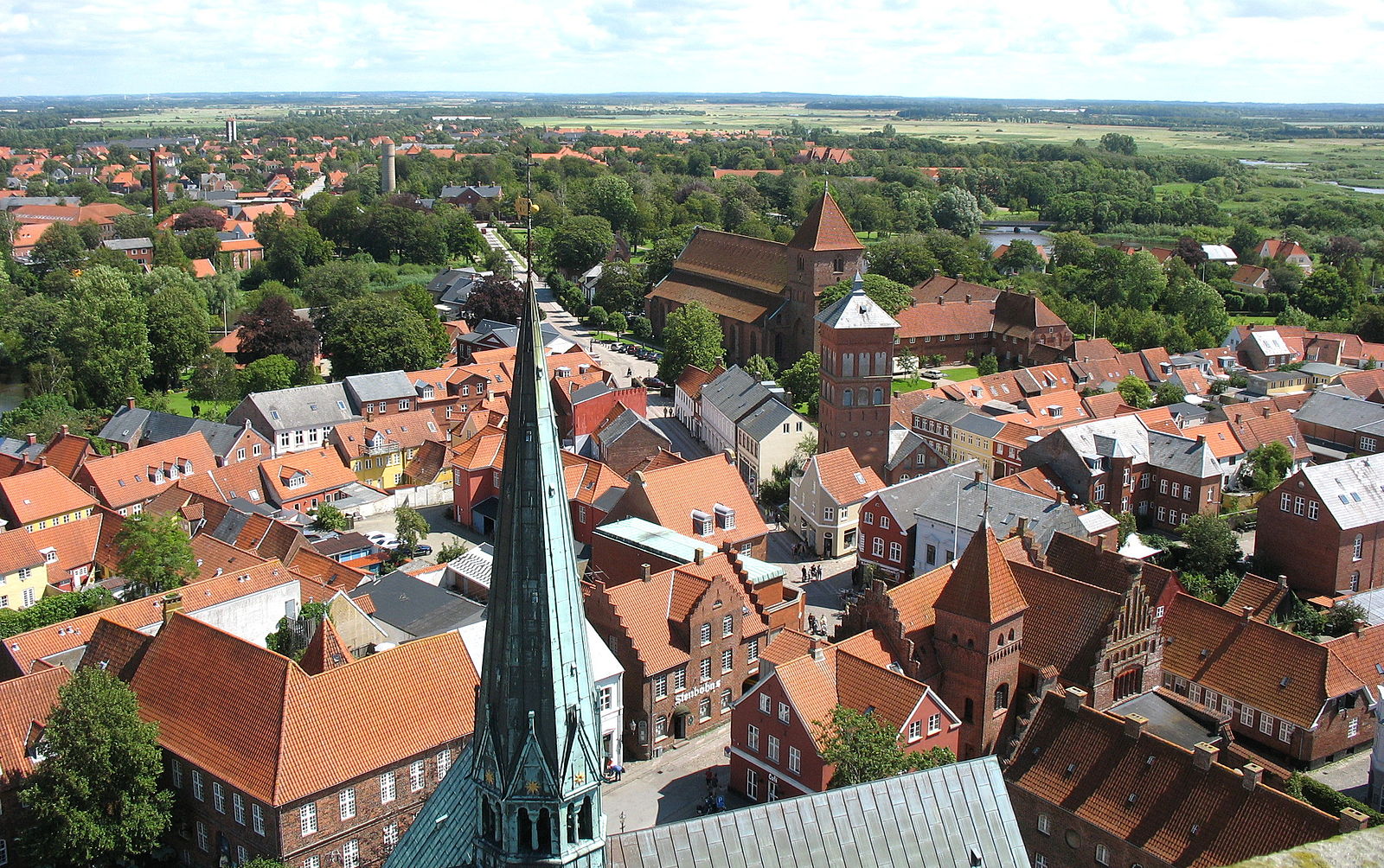



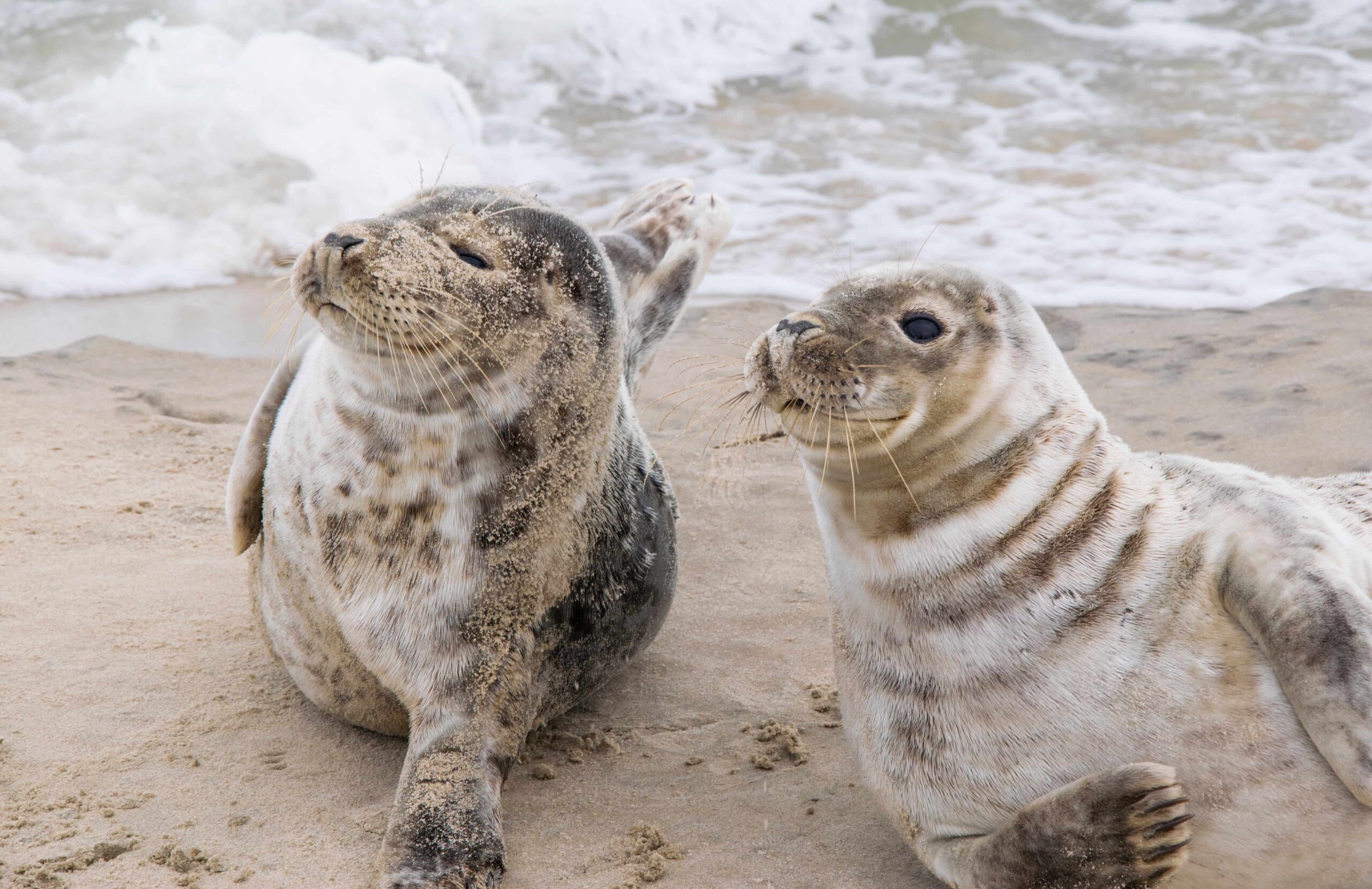
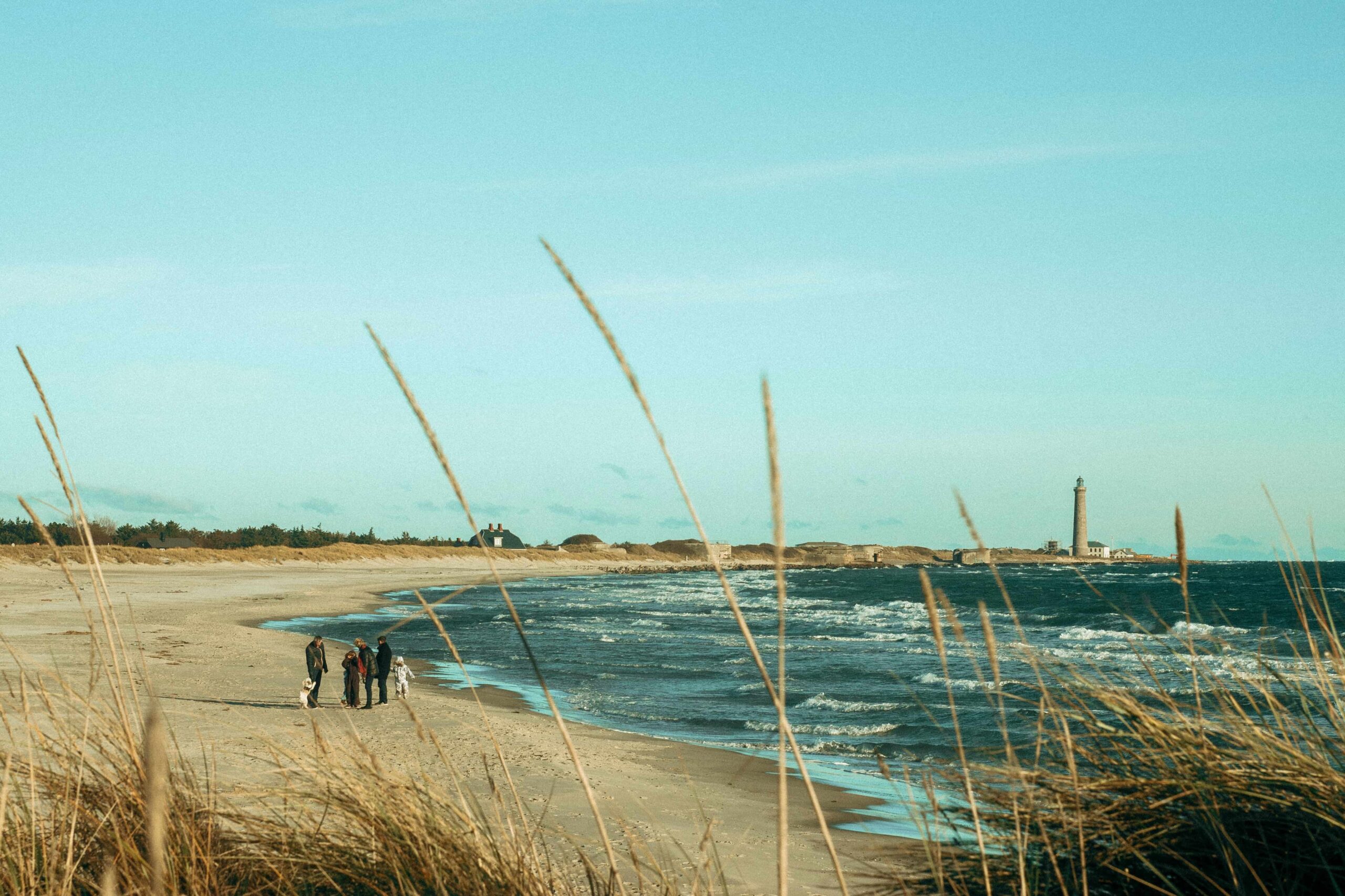
Day 5
Off to Skagen
Begin your day early and head north. If you have a car, it will take you roughly 3 hours to get there, so make yourself at home. Skagen is the town you’re searching for, and it’s famous not just for the timepieces it produces, but also for being the meeting point of two oceans.
The beach where the Baltic Sea and the North Sea merge is around 5 kilometers from Skagen proper. At some point, you’ll have to leave your car for either the buses available there or use your feet.
We recommend spending a night at Skagen and watching the sunset from the beach.
If you’re searching for a fun location to visit in Skagen, go to the local brewery, where they serve their own beer, live music, and delicious cuisine.
- Backpacker:
- Budget:
- Mid-range:
- Luxury:
When it becomes dark, a foreign city may be twice as dangerous - especially if you don't understand the language and are unfamiliar with the area. There is no reason to be alarmed about walking home alone in the dark as there is not enough crime recorded in Skagen to warrant any bit of worry. You can walk safely at night and never worry about crowded areas or unlit alleys or streets, but you can always take a taxi, if you don't feel comfortable. However, be wary of petty crime by taking precautions mentioned in the safety section above.
Day 6
To the South
If you leave Skagen early in the morning, you may visit the Rubjerg Knude Lighthouse, which is just about an hour away. You will see a little desert with a lighthouse in the middle, around thirty meters from the sea. The walks surrounding there are breathtaking, but be aware that it is a highly windy location.
When you’ve had your fill of this vista, off to Aarhus. Set up shop there for a while. Denmark’s second-largest city with a lot to offer. Head to the docks if you feel like stretching your legs. Aside from the stunning modern buildings, you will breathe in some fresh air. If that isn’t enough, take a city bus to the beach, where you can view the Aarhus everlasting bridge and enjoy a peaceful environment away from the majority of visitors. A little distance away is a garden called Marselisborg Dyrehave where you can freely roam among deers. You can even buy snacks for the animals when you arrive.


- Backpacker:
- Budget:
- Mid-range:
- Luxury:
When it becomes dark, a foreign city may be twice as dangerous - especially if you don't understand the language and are unfamiliar with the area. There is no reason to be alarmed about walking home alone in the dark as there is not enough crime recorded in Aarhus to warrant any bit of worry. You can walk safely at night and never worry about crowded areas or unlit alleys or streets, but you can always take a taxi, if you don't feel comfortable. However, be wary of petty crime by taking precautions mentioned in the safety section above.


Day 7
Cultural Day In Aarhus
Today after breakfast, try to absorb as much Danish culture as possible. Aarhus is an excellent location for this. Begin by visiting a modern art museum. They feature five floors of modern art. If this isn’t for you, their rainbow perspective is definitely for everyone.
Following that, if you’re interested in historical Denmark, go to Den Gamle by – it’s a museum neighborhood created to show you how Danes lived 200 years ago. And you can discover anything here, from how farms used to function to fisheries, and so on. As an added treat, there is a poster museum here. This is especially fun if you enjoy vintage posters.

The local botanic gardens should be the day’s final highlight. Massive chambers filled with flowers from many continents are free to tour, and at some point, you will arrive at a location where there will be not only tropical flowers, but also butterflies all around you.
From Aarhus, you can take a ferry to Copenhagen and either explore the city or grab a flight elsewhere.
Day 8
Copenhagen!
Begin your journey by seeing some of Copenhagen’s most famous attractions and landmarks.
First, visit the magnificently beautiful Nyhavn, a port surrounded by colorful charming cottages and ancient sailing vessels. Whether you merely want to take photographs of the buildings, eat at one of the numerous quayside eateries, or wander along the harbor, Nyhavn is a must-see when visiting Copenhagen.
Then, pay a visit to Amalienborg Palace, the Danish royal family’s residence. The palace is made up of four similar structures connected by a huge courtyard in the center. Make your way to the central courtyard at midday to see the changing of the Royal Guard. Visit the Amalienborg Museum to witness the rococo-style interior of the palace.

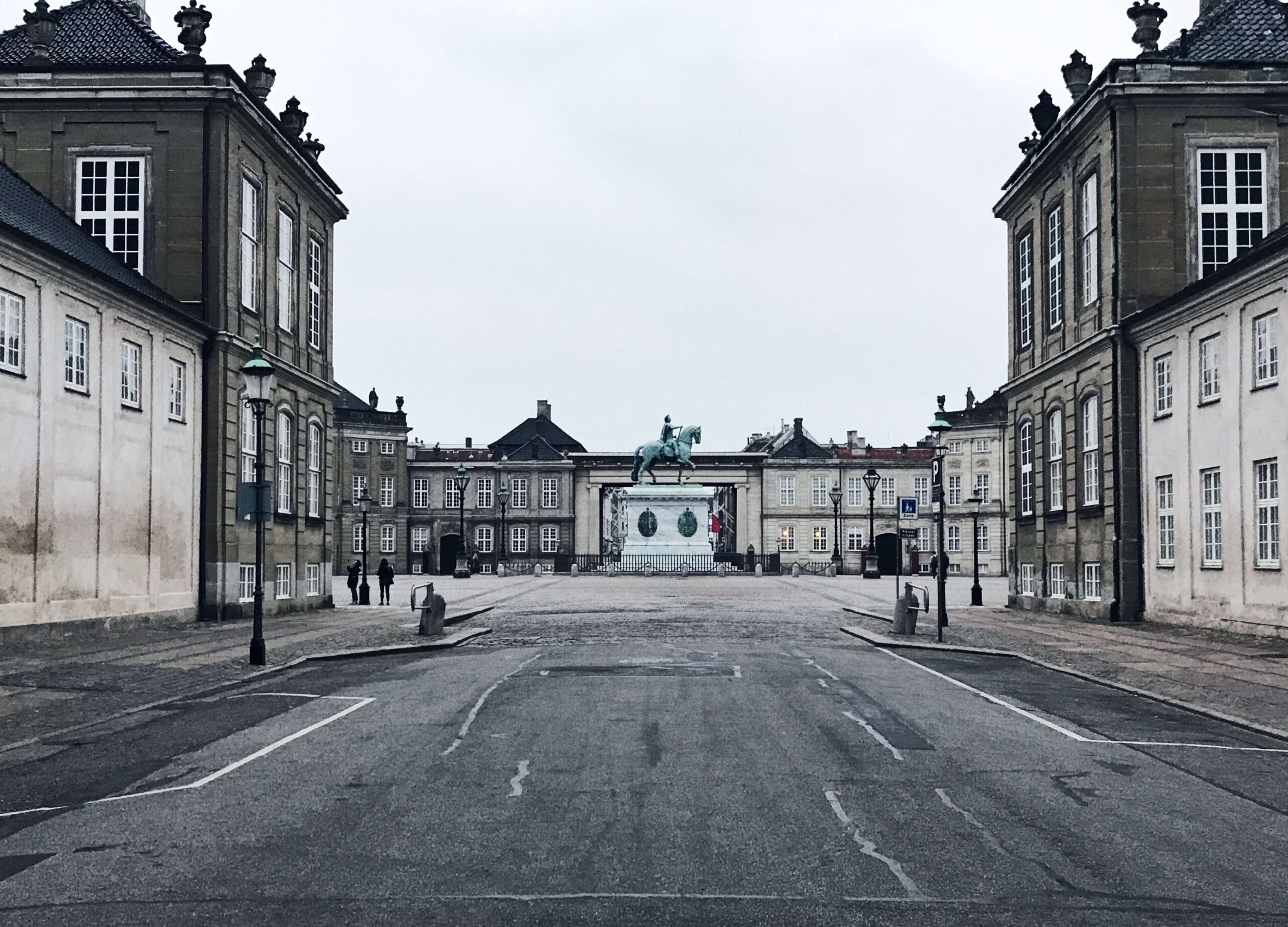
Then, proceed to Frederik’s Church, commonly known as the Marble Church, which is located immediately adjacent to Amalienborg Palace. This stunning cathedral stands out from the Copenhagen skyline with its large green dome and can be seen from many locations of the city. Nothing will prevent you from having a brief glance inside the church because admission is free.
The Gefion Fountain, a big and spectacular landmark created in 1908, is a short walk away. The fountain, which is topped by a monument of the Norse goddess Gefion, illustrates a fabled narrative about the creation of Zealand, the island on which Copenhagen is located.
The Little Mermaid, a bronze monument based on the world-famous fairy tale by Danish author Hans Christian Andersen, is just a short walk from the fountain. When you visit the famed statue, you might find it a little disappointed because it’s smaller than most tourists expect. Nonetheless, you should pay a visit to The Little Mermaid, which is one of Copenhagen’s most famous sights and is frequently regarded as the country’s icon. Furthermore, the waterfront promenade leading to the monument is a nice spot to walk and provides excellent views of the canal.

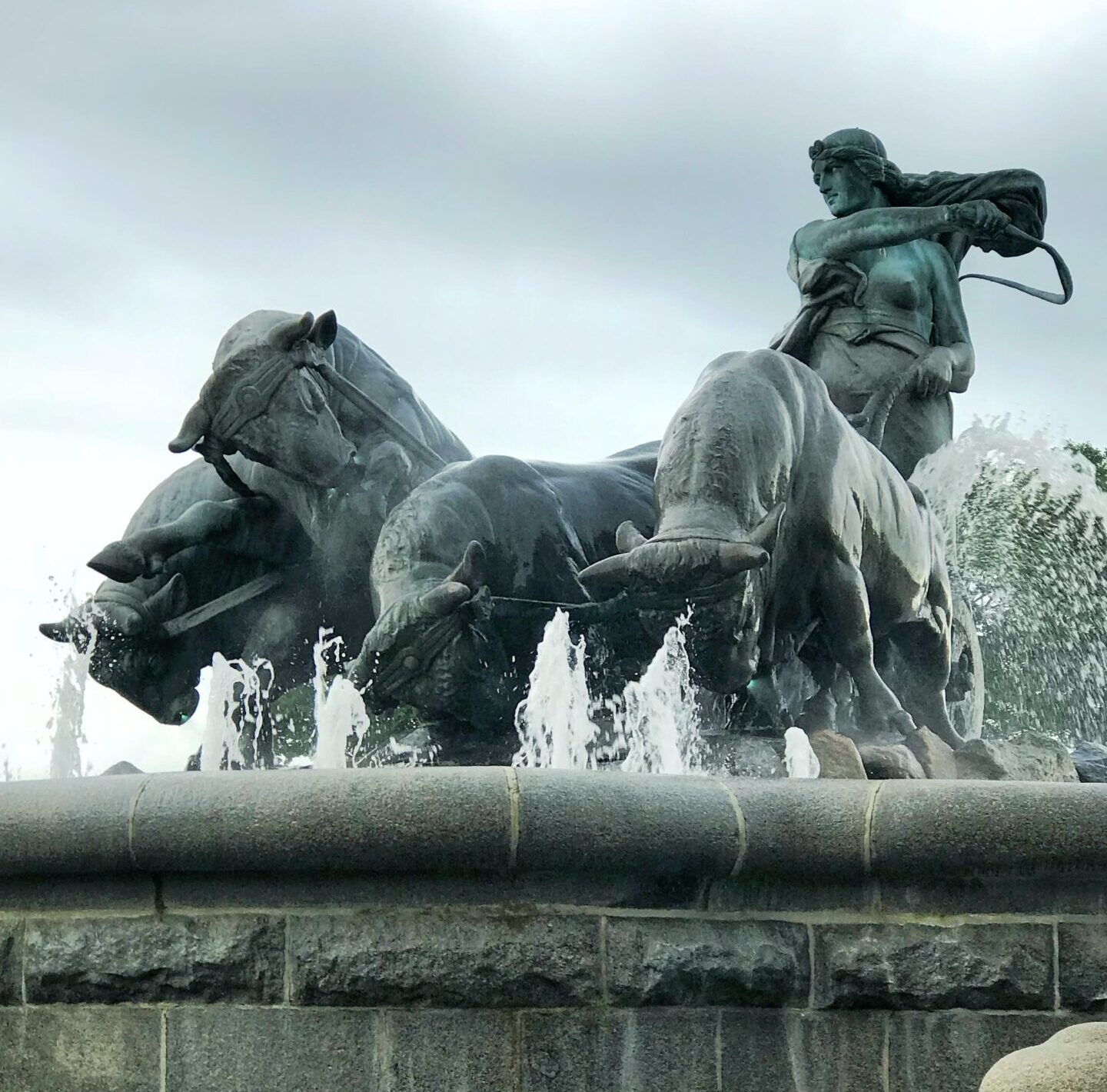

- Backpacker:
- Budget:
- Mid-range:
- Luxury:
When it becomes dark, a foreign city may be twice as dangerous - especially if you don't understand the language and are unfamiliar with the area. There is no reason to be alarmed about walking home alone in the dark as there is not enough crime recorded in Copenhagen to warrant any bit of worry. You can walk safely at night and never worry about crowded areas or unlit alleys or streets, but you can always take a taxi, if you don't feel comfortable. However, be wary of petty crime by taking precautions mentioned in the safety section above.

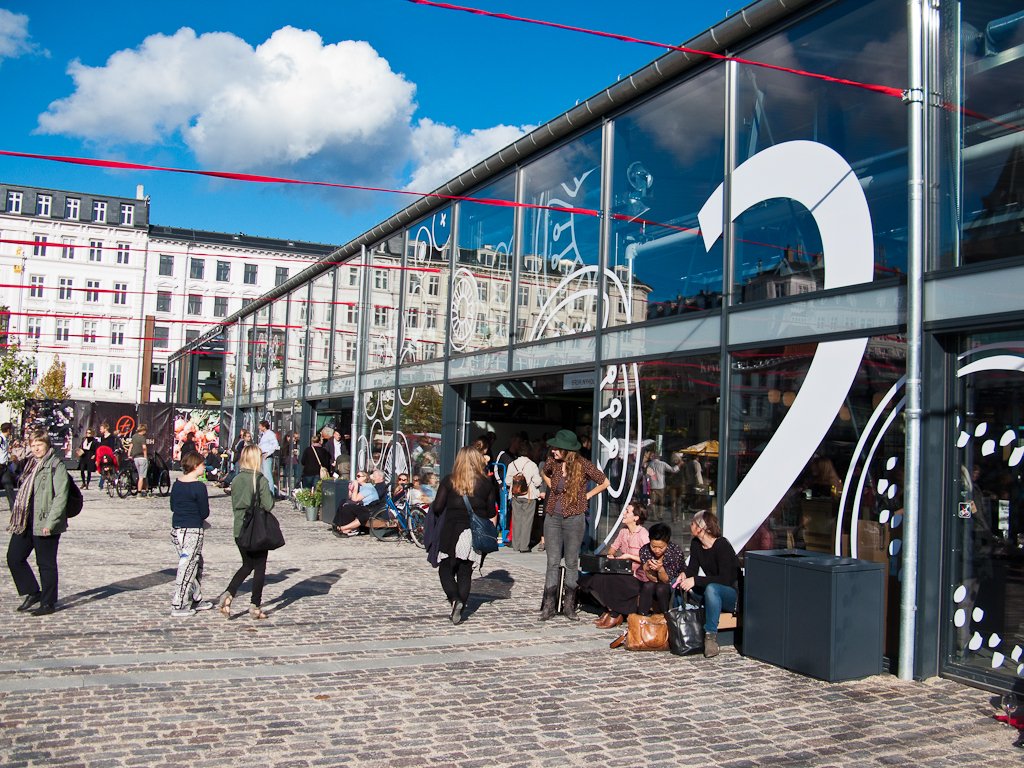
Day 9
Last Day
Begin the second day with a stroll around Copenhagen’s oldest park, the King’s Garden. The park has extensive lawns, flower beds, and a rose garden, making it an appealing spot to visit in the spring and summer. Rosenborg Castle, which houses the crown jewels of Danish royalty, is also located in King’s Garden.
Next, visit Torvehallerne, a bustling food market with two contemporary glass halls filled with innumerable kiosks selling high-quality fresh fruit, pastries, chocolates, liquor, fish, nuts, cheeses, and a variety of other delights. Apart from the market kiosks, there are other restaurants and cafeterias providing everything from tapas to oatmeal, sushi to pizza, and the traditional Danish open sandwiches known as smørrebrød. If you enjoy eating this is a foodie paradise.
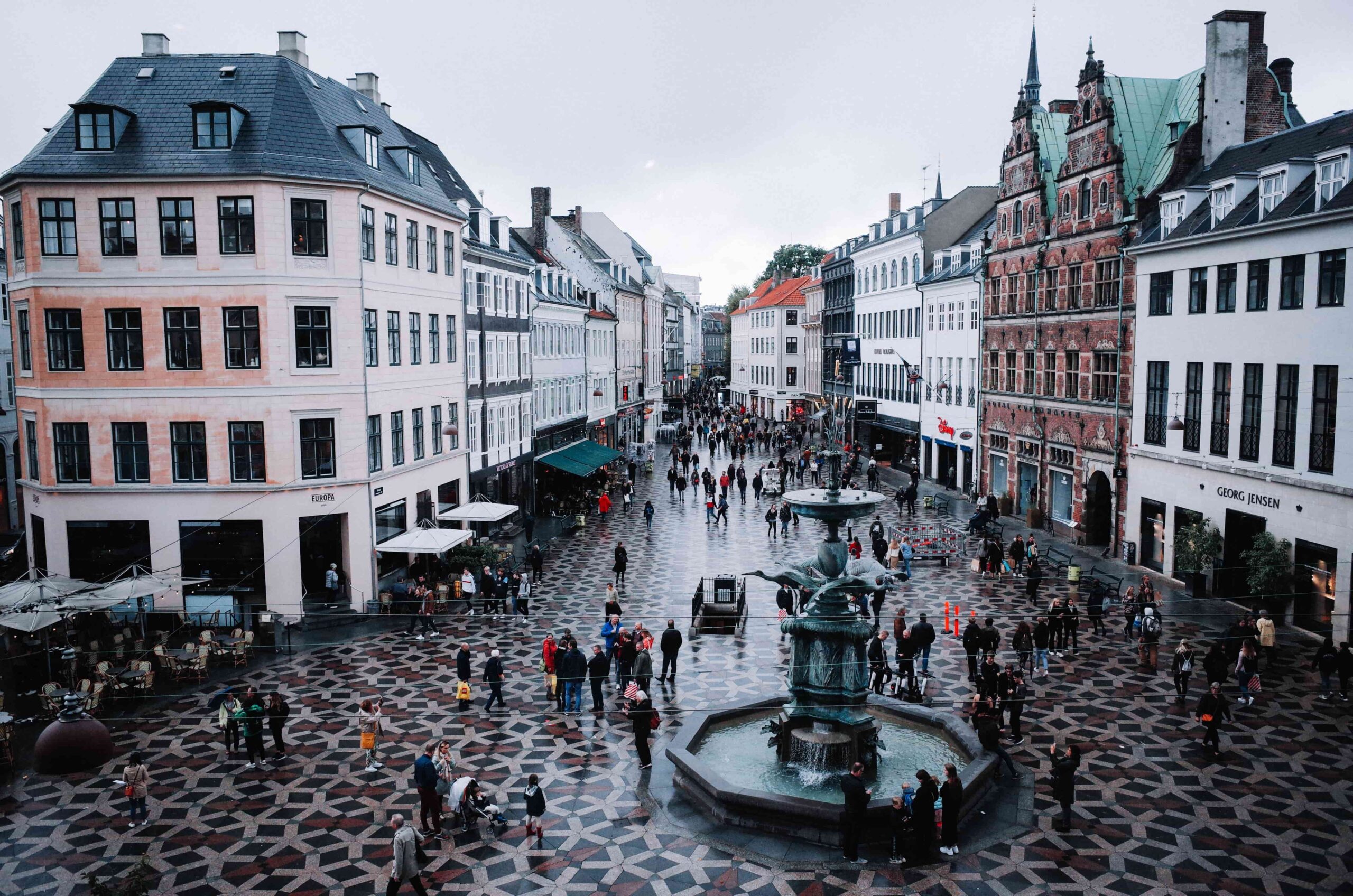

After enjoying food at Torvehallerne, stroll through Copenhagen’s lively pedestrian streets. Strøget is the longest and most well-known, although Købmagergade and Fiolstraede are also worth a look. These streets are dotted with cafes, pubs, and stores that offer both foreign and local products. Make a stop in Amagertorv plaza, a great area to people-watch and listen to street performances.
Finish your day by getting ready to leave to the airport and go back home. We hope you enjoyed your trip in Denmark and that this Denmark itinerary and guide was helpful. Let us know how your trip was.
The Most Popular Food in Denmark
The earliest major influences were North Germanic dialects in the Middle Ages, and subsequently French, English, Latin, and Greek altered and even molded the Danish language as we know it today. The cuisine is mostly based on peasant foods provided throughout the country before to the Industrial Revolution in 1860. Danish cuisine is recognized for its freshness and use of local ingredients. For breakfast or lunch, open-faced sandwiches are particularly popular with Danes, and meat and shellfish are popular supper options.

Smørrebrød
If there is one thing that Denmark is known for, it is open-faced sandwiches. A smørrebrd is usually made with buttered rye bread and topped with a variety of meats, cheeses, and garnishes. This phrase is translated as “bread and butter” in English.

Polsevogn
This is the name of a popular hot dog stand located in Copenhagen. You can order a riset hotdog on a bun with pickles, crispy onions, and traditional condiments like ketchup and mustard. These are similar to American hot dogs, but considerably longer. You may also request a franskdog, which is a hollowed-out baguette packed with a hotdog and sweet mayo.

Frikadeller
Pan-fried Danish meatballs prepared from ground beef. While they may be seen in many other nations, the Danes are believed to be the greatest at it. The beef is seasoned with salt and pepper and blended with onions, eggs, milk, and breadcrumbs. This dish is available at many restaurants and food booths.
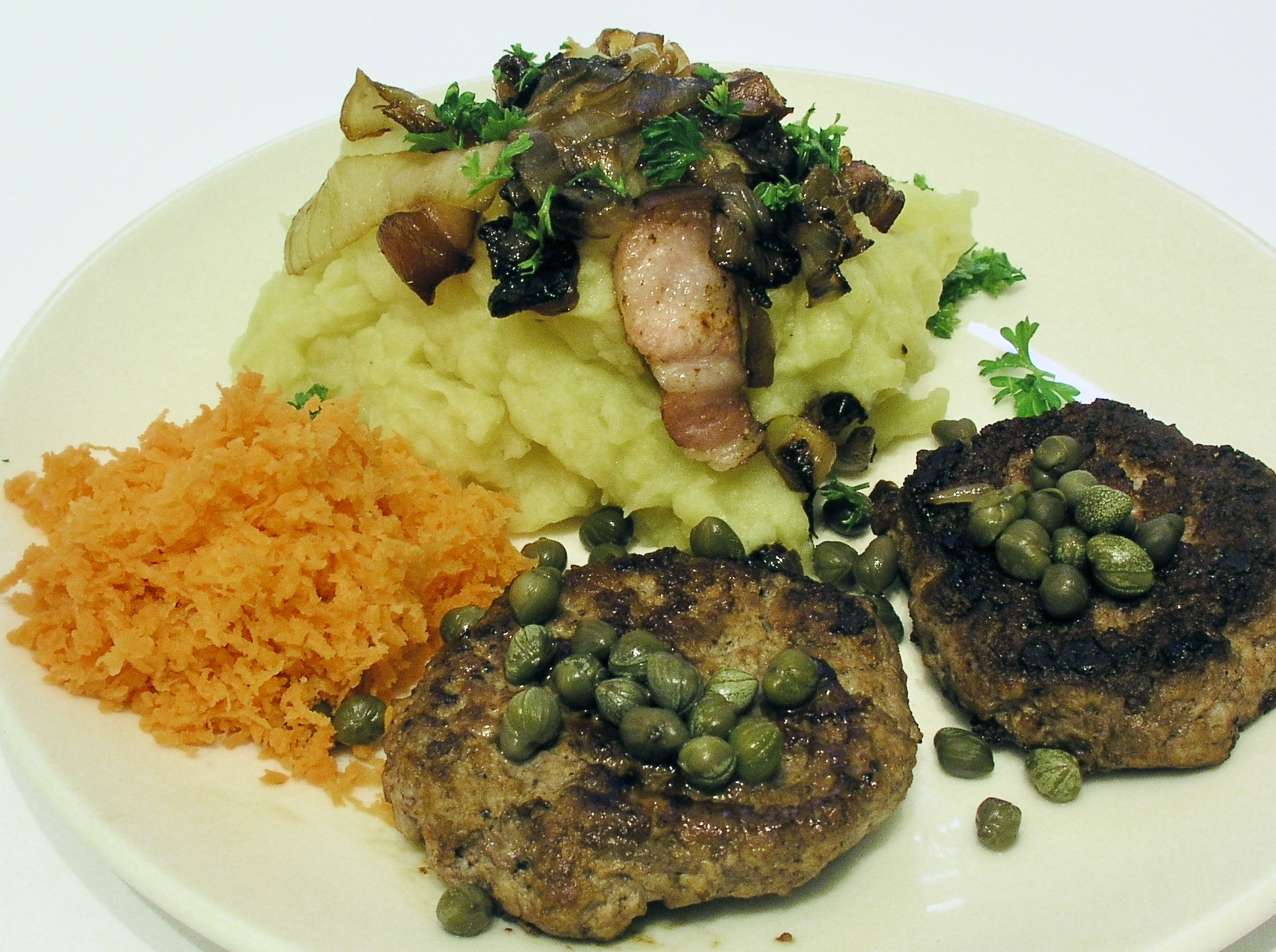
Brændende Kærlighed
Braendende Kaerlighed (Burning Love) is a traditional Danish dish that dates back nearly 200 years. It requires only three ingredients: mashed potatoes, sliced onions, and cooked bacon. People nowadays garnish it with dill, parsley, or even sliced beets. If you’re pressed for time, you may get a ready-made burning love at your local Danish grocery.

Hønsekødssuppe
The name Hønsekødssuppe is misleading because it literally translates to “chicken soup.” The recipe, however, does not include any poultry pieces. Danes boil a whole chicken to make a tasty broth soup. The frikadeller and dumplings can then be added. Surprisingly, poultry accounts for 28% of their meat intake. As a result, there aren’t many traditional Danish meals based on chicken.
What's the Travel Budget for Denmark?
Flights
- Flights start at roughly $18 from nearby countries. Tickets however on average cost around $270 and can cost way more depending on which class and from which country you depart from.
Accommodation
- Nomad Backpacking style travelers can expect to spend around $250 for a week
- Budget travelers can expect to spend around $370 for a week
- Mid-range travelers can expect to spend around $630 for a week
- Luxury travelers can expect to spend around $1,120 for a week
Food Budget (Three meals and drinks)
- Nomad Backpacking style travelers can expect to spend around $12 per person per day
- Budget travelers can expect to pay around $20 per person per day
- Mid-range travelers on average would cost $25 to $35 per person per day
- Luxury travelers can expect to pay around $40 to $70 per person per day
Overall Budget Styles (Not including Flights, Tours, Transportation, or Car Rental)
- Nomad Backpacking style travelers can expect to spend roughly $360 for a week
- Budget travelers can expect to spend close to $550 for one person for a week
- Mid-range travelers can expect to spend approximately $910 for one person for a week
- Luxury travelers can expect to spend around $1,650 for one person for a week
Flights
- Flights start at roughly $18 from nearby countries. Tickets however on average cost around $270 and can cost way more depending on which class and from which country you depart from.
Accommodation
- Nomad Backpacking style travelers can expect to spend around $250 for a week
- Budget travelers can expect to spend around $370 for a week
- Mid-range travelers can expect to spend around $630 for a week
- Luxury travelers can expect to spend around $1,120 for a week
Food Budget (Three meals and drinks)
- Nomad Backpacking style travelers can expect to spend around $12 per person per day
- Budget travelers can expect to pay around $20 per person per day
- Mid-range travelers on average would cost $25 to $35 per person per day
- Luxury travelers can expect to pay around $40 to $70 per person per day
Overall Budget Styles (Not including Flights, Tours, Transportation, or Car Rental)
- Nomad Backpacking style travelers can expect to spend roughly $360 for a week
- Budget travelers can expect to spend close to $550 for one person for a week
- Mid-range travelers can expect to spend approximately $910 for one person for a week
- Luxury travelers can expect to spend around $1,650 for one person for a week
Flights
- Flights start at roughly $18 from nearby countries. Tickets however on average cost around $270 and can cost way more depending on which class and from which country you depart from.
Accommodation
- Nomad Backpacking style travelers can expect to spend around $250 for a week
- Budget travelers can expect to spend around $370 for a week
- Mid-range travelers can expect to spend around $630 for a week
- Luxury travelers can expect to spend around $1,120 for a week
Food Budget (Three meals and drinks)
- Nomad Backpacking style travelers can expect to spend around $12 per person per day
- Budget travelers can expect to pay around $20 per person per day
- Mid-range travelers on average would cost $25 to $35 per person per day
- Luxury travelers can expect to pay around $40 to $70 per person per day
Overall Budget Styles (Not including Flights, Tours, Transportation, or Car Rental)
- Nomad Backpacking style travelers can expect to spend roughly $360 for a week
- Budget travelers can expect to spend close to $550 for one person for a week
- Mid-range travelers can expect to spend approximately $910 for one person for a week
- Luxury travelers can expect to spend around $1,650 for one person for a week
Flights
- Flights start at roughly $18 from nearby countries. Tickets however on average cost around $270 and can cost way more depending on which class and from which country you depart from.
Accommodation
- Nomad Backpacking style travelers can expect to spend around $250 for a week
- Budget travelers can expect to spend around $370 for a week
- Mid-range travelers can expect to spend around $630 for a week
- Luxury travelers can expect to spend around $1,120 for a week
Food Budget (Three meals and drinks)
- Nomad Backpacking style travelers can expect to spend around $12 per person per day
- Budget travelers can expect to pay around $20 per person per day
- Mid-range travelers on average would cost $25 to $35 per person per day
- Luxury travelers can expect to pay around $40 to $70 per person per day
Overall Budget Styles (Not including Flights, Tours, Transportation, or Car Rental)
- Nomad Backpacking style travelers can expect to spend roughly $360 for a week
- Budget travelers can expect to spend close to $550 for one person for a week
- Mid-range travelers can expect to spend approximately $910 for one person for a week
- Luxury travelers can expect to spend around $1,650 for one person for a week
If you want to know what to pack, read this list below:
- This is a casual European country with mild to cold weather that tends to be hot in the summer, and freezing in the winter, dress accordingly
- Raincoat or Light Waterproof Jacket
- Hiking Boots or Sturdy Sneakers (Shoes You Don’t Mind Getting Wet)
- Sunscreen
- Insect Protection – Repellent and Clothing
- Sunglasses and Sun Hat
- Water Shoes
- Beach Towels/Sarong
- Dry Bag
- Money Belt or Cross Bag
- Portable Medical Kit
- Flashlight or Headlamp
- Copies of your passport.
- Get all the needed vaccinations before traveling
- A power bank is a must in any travel.
- Always have some cash with you just in case there are no ATMs and if you are dealing with a business that solely accepts cash
- Get yourself an adapter for your gadgets
- 1 toothbrush
- 1 tube of toothpaste
- 1 razor
- 1 package of dental floss
- 1 small bottle of shampoo
- 1 small bottle of shower gel
- 1 towel
- Deodorant
- Band-Aids
- Hydrocortisone cream
- Antibacterial cream
- Earplugs
- Tylenol
- Hand sanitizer (germs = sick = bad holiday)
- A key or combination lock
- Zip-lock bags
- Plastic bags (great for laundry)
- Universal charger/adaptor
- LifeStraw (A water bottle with a purifier)
- 1 dry shampoo spray & talc powder
- 1 hairbrush
- Makeup you use
- Hairbands & hair clips
- Feminine hygiene products
Clothing For Boys
- 1 pair of jeans or khaki pants
- 1 pair of shorts
- 1 bathing suit
- 5 T-shirts
- 1 long-sleeved T-shirt
- 1 pair of flip-flops
- 1 pair of sneakers
- 6 pairs of socks
- 5 pairs of boxer shorts
Clothing For Girls
- 1 swimsuit
- 1 sarong
- 1 pair of stretchy jeans
- 1 pair of leggings
- 2-3 long-sleeve tops
- 2-3 T-shirts
- 3-4 spaghetti tops
- 1 light cardigan
Want to plan your own trip, here are some of the best resources that can help you
- Skyscanner – They search small websites and budget airlines that larger search sites tend to miss. They are hands down the number one place to start.
- Momondo – This is another favorite flight search engine because they search such a wide variety of sites and airlines. Always check here too.
- Booking.com – The best all-around booking site that constantly provides the most affordable and lowest rates. They have the widest selection of budget accommodation.
- Couchsurfing – This website allows you to stay on people’s couches or spare rooms for free. It’s a great way to save money while meeting locals who can tell you the ins and outs of their city. The site also lists events you can attend to meet people (even if you’re not staying with someone).
- Intrepid Travel – If you want to do group tours, go with Intrepid. They offer good small group tours that use local operators and leave a small environmental footprint.
- Grassroots Volunteering – For volunteering, Grassroots Volunteering compiles a list of good local volunteer organizations that keep the money within the community.
- Get Your Guide – Get Your Guide is a huge online marketplace for tours and excursions. They have tons of tour options available in cities all around the world, including everything from cooking classes, walking tours, street art lessons, and more! It has the world’s largest collection of things to do with more than 30,000 activities in 7500 destinations.
- SafetyWing – Safety Wing offers convenient and affordable plans tailored to digital nomads and long-term travelers. They have cheap monthly plans, great customer service, and an easy-to-use claims process that makes it perfect for those on the road.
- Trip Advisor: Check the reviews and then book your accommodation. TripAdvisor is where you go when you want to compare prices with multiple accommodation providers.
- VRBO: is the main search engine to use when you are looking for a home or apartment rental. It can sometimes be cheaper than hotels and it is the best way to stay in areas that offer a more local feel.
- Hostelworld: With one of the largest databases of hostels in the world, Hostelworld is the go-to site when you are looking for budget accommodation.
- Rome 2 Rio: If you want to see how to get somewhere by plane, train, bus, ferry, or car Rome2Rio lays it all out for you as well as related costs.
- World Nomads Insurance: When traveling you should always have travel insurance. We have found the best bang for your buck is by far World Nomads.
Final Thoughts on Denmark
With diverse relics of its turbulent past and rich Viking heritage, breathtaking and unique landmarks – great hospitality, exciting festivals, and picture-perfect national parks, beaches, and antique towns, Denmark has a refined and deep heritage that can be seen across the country dating back to 10,000 BC. A fantastic option for anyone seeking one of the best European holiday locations nestled in Northern Europe. Denmark is breathtakingly beautiful, with magnificent national treasures, flora and fauna, and spectacular scenery. Would you visit Denmark?
Have you ever been to Denmark? Please share your thoughts and experiences in the comments area below.